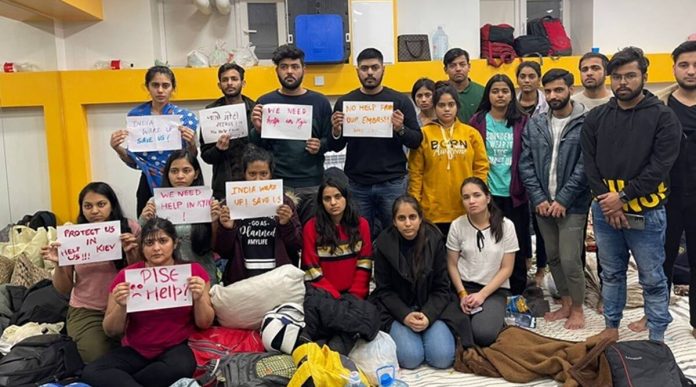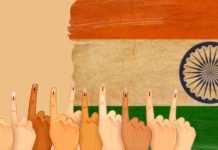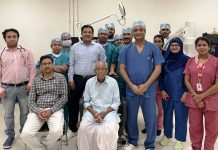Bhubaneswar: During February – March 2014, when Russia forcibly took over a part of the Crimea Peninsula from Ukraine, Indians had hardly paid any heed as it was an affair taking place in an unknown and faraway country. Neither the newspapers readers nor the viewers of news channels were intrigued by the news or details of it. But when Russia attacked Ukraine this time, the Indians were deeply into it empathetically for a large number of Indian medical students being present there for their course. The reason why Ukraine – Russian war has got into many Indian households, is thousands of students getting evacuated by the Indian government from a war struck Ukraine.
By coming to know this fact, people in India must be wondering why students in such a huge number are heading towards a comparatively unfamiliar country like Ukraine. Reportedly, the total number of Indian students who were present and got evacuated from Ukraine is about 20,000. It is quite surprising to know because there has been the notion that Indian students prefer to go abroad for studies by getting captivated by that country’s better quality of education. For example, if a doctor has got a degree from a university in England or America, it gives an added value to his/ her resume.
Ukraine, on the other hand, has no such excellence either in the field of higher education or in medical science. However, other than Ukraine, medical students from India also head to many neighbouring countries of Ukraine like Poland, Romania, and even the former member of the Soviet Union, and a backward country like Kyrgyzstan of Central Asia. The education system of all these countries is very poor similar to Ukraine. It is worth mentioning that, with the outbreak of Covid in china the presence of many Indian students also astonished the country.
The two major factors that have been pushing Indian students to pursue their medical degree from the countries line above are a dearth of enough medical colleges and less number of seats for medical students in our country and the second one is a hefty amount of fees and other expenses for studying medicine in India. As per reports, In our country, the number of seats at various colleges for undergraduate degrees in medical education is only 0,000 per year. Whereas, the number of aspiring students who appears in the NEET examination to get through the medical entrance is more than 16 lakh every year. Out of them, only half of the aspiring students, (about 8.5 lakh) can clear the entrance to get into medical colleges.
Although the minimum standards set for eligibility to get into medical colleges is very low still the result is so disappointing. For example, the total mark for the NEET examination was 720, the cut-off mark was set to 138. In our medical colleges, out of the 90,000 seats, about half of the seats come under reservation, which cost comparatively less for the students coming from the reserve categories. In some states, this reservation system in medical education has been implemented.
Despite the reservation, the cost of medical education in private colleges is so high that for a middle-class family it becomes almost impossible to reach there. Getting a medical degree in a private medical college, cost more than one. In this situation, the system gets distorted by a less talented student scoring a much lower rank in the entrance gets a seat in the private college by paying a huge amount of donation and talented deserving students having a middle-class family background have to study tirelessly to secure a much higher and better rank to get a seat in a government-aided college. This distortion gets channelised because of the setting of very less cut- off marks in the entrance exam.
This circumstance gives birth to the scenario of students opting to pursue their medical studies in countries like Ukraine. Having secured a good rank in NEET, parents send their children to Ukraine for studying by not being able to bear the cost of it in India. Even though there array such students who have not qualified for NEET still have gone to Ukraine for getting a medical degree. Brokers active in both the countries materialise all these. By visualising this distortion occurring in the education system, the Indian government should take some steps to bring about structural change in the field of medical education and health care. the minimum fundamental duty of a welfare state is to provide free public health and education to the citizens. Till 1980, health services were the responsibility of the state. After that, the health sector became more private and commercial. In India, the government should follow the National Health Service (NHS ) in Britain as a model here by prioritising the investment of the nation’s resources in the provision of cost-effective health care, including the direct provision of affordable health care and the establishment of high-quality government medical colleges.
-OdishaAge




















